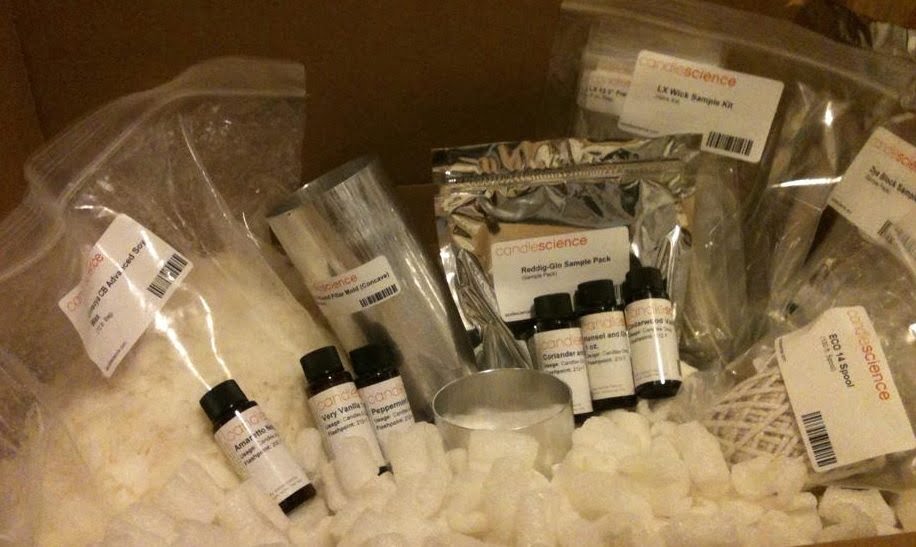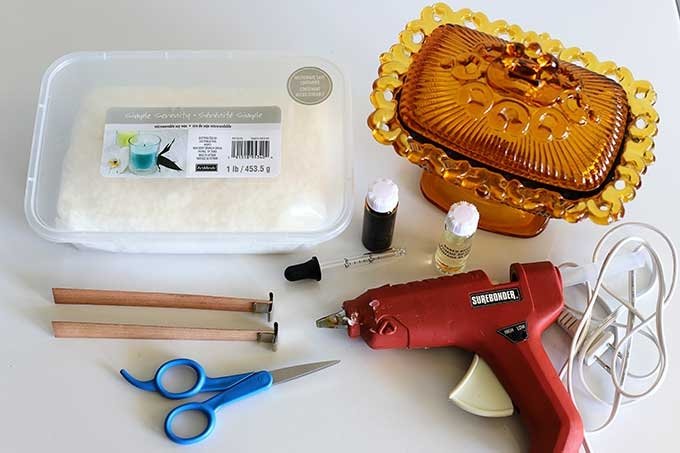Making your own candles can be a delightful and fulfilling hobby. The process allows you to exercise your creativity, personalize your home decor, and even create thoughtful gifts for loved ones. As you meticulously pour the molten wax into beautiful containers and carefully select fragrances that speak to your senses, there’s a sense of accomplishment that comes with creating something unique with your own hands.
But the true magic happens when you finally light up your newly made candle and let its warm glow fill the room. So, how long do you have to wait before taking this anticipated step? In this article, we will explore the answer to the burning question: how long after making a candle can you burn it?
The excitement of making candles lies not only in the process but also in the anticipation of enjoying their gentle flickering light and delightful scents. There’s an eagerness to test out our creations, as well as satisfaction in knowing that we’ve produced something beautiful and personal.
However, it is crucial to respect the curing time needed for optimal burn quality and scent throw. So while we may be eager to light up our freshly made candles right away, patience is key.
In order to fully understand when it is safe to burn a newly made candle, it is important to grasp the concept of curing. Curing refers to allowing the candle sufficient time for all its components-wax, fragrance oils, and wicks-to meld together harmoniously.
This process typically enhances the overall performance of the candle, resulting in better scent diffusion and a more even burn throughout its lifespan. By taking into account various factors such as wax type, fragrance load, and candle size during this curing period, candle makers can ensure that their creations are safe and ready for use.
So, if you are curious about when you can finally ignite that enticing new creation sitting on your shelf, read on. We will explore the intricacies of curing candles and shed light on the various factors that influence this process.
From discussing different wax types to examining fragrance load and size considerations, we will equip you with the knowledge necessary to determine just how long after making a candle you can burn it. So get ready to embark on a journey of discovery and prepare your senses for the radiant glow and alluring aromas of homemade candles.
The Importance of Curing Candles Before Burning
Curing candles before burning is an essential step in the candle-making process. It involves allowing the candles to rest and age for a certain period of time to ensure optimal scent throw and burn quality. While it may be tempting to light up your newly made candle immediately, patience is key in achieving the best results.
The process of curing allows the fragrance oils and waxes in the candle to fully blend together, resulting in a stronger and more consistent scent throw. Additionally, curing gives the wax time to harden properly, preventing issues such as tunneling or uneven burning. By allowing the candle to cure before burning, you are enhancing its overall performance and longevity.
The amount of time required for curing varies depending on factors such as wax type, fragrance load, and candle size. As a general guideline, soy-based candles should be cured for at least 48 hours, while paraffin-based candles typically require around one week of curing time. Beeswax candles may take even longer to cure due to their natural properties.
| Wax Type | Curing Time |
|---|---|
| Soy | 48 hours |
| Paraffin | 1 week |
| Beeswax | 2-3 weeks |
It’s important to keep in mind that these are just general guidelines, and specific recommendations may vary based on individual formulations and preferences. It’s always best to consult the instructions provided with your wax or fragrance oils to determine the ideal curing time for your specific candle.
By allowing your candles enough time to cure, you are ensuring that they reach their full potential in terms of scent performance and burn quality. So, resist the temptation to light them up immediately and savor the anticipation of burning a beautifully cured candle.
Factors Influencing Curing Time
Curing time is an essential aspect of candle making that determines when a candle is ready to be burned. It is influenced by various factors, including the type of wax used, fragrance load, and candle size. Understanding these factors is crucial in determining the optimal time to burn your newly made candles and ensures a satisfying and safe burning experience.
The type of wax used plays a significant role in the curing time of candles. Different waxes have different compositions and properties, resulting in varying curing times. For example, soy wax typically requires a longer curing period compared to paraffin wax.
On average, soy candles may need to cure for at least one week before they can be burned, while paraffin candles typically require only a few days. It is important to note that these are general guidelines, and specific curing times may vary based on other factors such as fragrance load and candle size.
Another factor that affects the curing time of candles is the fragrance load. Fragrance oils add scent to candles but can also impact their curing process. Candles with higher fragrance loads may require additional curing time as the scent needs more time to fully infuse into the wax. On the other hand, candles with lighter fragrance loads may cure faster. As a general rule, allowing candles with higher fragrance loads about two weeks to cure before burning is recommended.
In addition to wax type and fragrance load, candle size also influences the curing time. Larger candles generally take longer to cure than smaller ones due to their larger volume of wax. The increased volume means that it will take more time for the scent molecules to distribute throughout the entire candle evenly. As a result, larger candles may require up to three weeks or more of curing before they are ready for burning.
Considering these factors when determining the appropriate curing time for your candles will help ensure that you achieve optimal burn quality and scent throw when you light them up for the first time. It is important to remember that while there are general guidelines, every candle is unique and may require individual attention during the curing process. Observing visual cues such as changes in color and texture can also provide valuable insights into the readiness of your candles.
| Factors | Curing Time |
|---|---|
| Wax Type (e.g., soy, paraffin, beeswax) | Varies (e.g., 1 week for soy, a few days for paraffin) |
| Fragrance Load | About 2 weeks recommended for high fragrance load |
| Candle Size | Up to 3 weeks or more for larger candles |
Wax Type and Curing Time
When it comes to candle making, the type of wax used plays a significant role in determining the curing time before you can safely burn your handmade creation. Different types of waxes have varying melting points, binders, and additives, which can affect how long it takes for the candle to fully cure. Here, we will discuss some common wax types used in candle making and their average curing times.
- Paraffin Wax: Paraffin wax is one of the most popular options for candle making due to its affordability and ease of use. Typically, paraffin candles require a curing time of 24-48 hours before they are ready to be burnt. However, it is essential to note that larger or more fragrant candles may need additional time to cure properly.
- Soy Wax: Soy wax has gained popularity among candle makers as a natural and renewable alternative to petroleum-based waxes. Soy candles generally have a longer curing time compared to paraffin candles. On average, soy candles require 48-72 hours or even up to a week for proper curing, ensuring optimal scent throw and burn quality.
- Beeswax: Beeswax is esteemed for its natural scent and air-purifying properties. Due to its high melting point and dense composition, beeswax candles typically have the longest curing time among common waxes. It is recommended to let beeswax candles cure for at least one week before lighting them up.
To determine if your candle is sufficiently cured, perform a simple “press test.” Gently press your finger against the surface of the cooled candle; if no indentations or oils transfer onto your finger, it indicates that your candle has fully cured.
Understanding the different curing times for various wax types will ensure that you experience the best possible burn quality with your handmade candles. Don’t rush the process; allow ample time for your candles to cure completely. Patience will be rewarded with a beautiful, well-fragranced, and long-lasting candle.
Fragrance Load and Its Impact on Curing Time
When it comes to making your own candles, one important factor to consider is the fragrance load and its impact on curing time. The fragrance load refers to the amount of fragrance oil that is added to the candle wax during the candle-making process. This plays a crucial role in determining how long you should wait before burning your newly made candle.
The fragrance load can greatly affect the curing time because it influences the overall composition and chemical properties of the candle. Candles with a higher fragrance load generally require a longer curing time compared to those with a lower fragrance load. This is because the excess oil needs more time to blend with the wax and fully incorporate into the candle.
To adjust curing time based on fragrance load, it is recommended to follow these guidelines:
- For candles with a low fragrance load (around 6-8%): These candles usually have a shorter curing time, typically around 3-5 days. However, it’s still important to check for visual cues and perform a burn test before lighting them up.
- For candles with a moderate fragrance load (around 8-10%): These candles may require slightly longer curing time, usually around 5-7 days. It’s best to let them sit undisturbed during this period to achieve optimal scent throw and burn quality.
- For candles with a high fragrance load (above 10%): These candles generally need an extended curing time, ranging from 7-14 days or even longer. This allows for proper blending of the oils into the wax, resulting in stronger scent throw and better performance when burning.
It’s important to note that these are general guidelines, as different fragrances may have varying effects on cure times. It is always recommended to consult specific fragrance manufacturer recommendations and conduct burn tests before determining if your candle is fully cured.
By understanding how fragrance load can affect curing time, you can ensure that your candles are properly cured before enjoying their delightful scents. Patience is key in candle making, and allowing sufficient time for curing will greatly enhance the overall quality and performance of your homemade candles.
Candle Size and Its Influence on Curing Time
When it comes to candle making, the size of your candle plays a significant role in determining the curing time. Larger candles generally require a longer curing period compared to smaller ones. This is because the larger surface area of the wax takes more time for the fragrance to fully integrate and for the wax to solidify completely.
Managing Different Candle Sizes during the Curing Process
If you are making candles in different sizes, it is important to be mindful of their individual curing times. You can follow these guidelines to effectively manage different candle sizes during the curing process:
Keep Track of Each Candle
It can be helpful to label each candle with its creation date and size. This way, you can easily keep track of how long each has been curing and ensure that you don’t forget about any candles that need more time.
Separate Candles by Size
Consider organizing your cured candles by size. By having them grouped together, you can easily identify which candles are ready for burning based on their respective curing times.
Patience Is Key
It can be tempting to light up your candles as soon as possible, especially if you’re excited about enjoying their fragrance and ambiance. However, it is crucial to exercise patience and allow each candle sufficient time to cure based on its size.
Understanding why larger candles require longer curing periods can help manage expectations and ensure that your finished product delivers an optimal burn experience when it’s finally time to light them up.
Remember: Safety First
While waiting for your candles to cure, make sure to store them in a cool, dry place away from flammable materials or direct sunlight. Additionally, keep in mind that once your candles have fully cured, there are still safety measures you should follow when burning them. Always trim the wick before lighting each candle, and never leave a burning candle unattended.
With proper attention to candle size and curing time, you can enjoy the satisfaction of making your own candles while creating a serene ambiance in your home. So sit back, relax, and look forward to the moment when you can finally light up your beautifully cured creations.
Signs of a Fully Cured Candle
Once you have patiently waited for the recommended curing time, it is important to know how to determine if your candle is fully cured and ready for burning. There are several signs that indicate a candle has finished the curing process and is safe to light up.
One of the key visual cues to look for is a change in color. During the curing process, the color of the candle should become more opaque and consistent throughout. If there are any remaining spots of discoloration or cloudiness, it may indicate that the candle still needs more time to cure. Additionally, pay attention to any cracks or imperfections on the surface of the candle. A fully cured candle should have a smooth and blemish-free appearance.
Another important factor to consider is texture. A properly cured candle should have a firm texture without any soft or mushy spots. Gently press your finger into the surface of the candle and see if it leaves an indentation. If the surface bounces back quickly and retains its shape, it is a good indication that the candle has reached optimal firmness.
Before lighting up your cured candle, it is recommended to conduct a burn test. This involves lighting the wick and observing how evenly and steadily the wax burns. A properly cured candle will have an even melt pool with minimal smoking or sooting. If you notice excessive smoking or uneven melting, it may be a sign that further curing is required.
By paying attention to these visual cues and conducting a burn test, you can ensure that your candle is fully cured and ready for use. It is always better to err on the side of caution and allow extra curing time if you are unsure about whether your candle has completed its curing process. Taking these steps will not only enhance your overall burn experience but also promote safety during use.
Safety Measures for Burning Cured Candles
Understanding the Importance of Safety
When it comes to burning candles, safety should always be a top priority. While the anticipation of lighting up your beautifully cured candle might be overwhelming, it is crucial to take proper precautions to ensure a safe and enjoyable candle-burning experience. In this section, we will discuss the importance of safety measures when using candles and provide helpful tips to mitigate potential risks.
Risks of Burning Candles that are not Fully Cured
Burning candles that have not undergone the recommended curing time can pose certain risks. It is important to note that when a candle has not properly cured, it may not burn evenly and could potentially cause excessive smoke or soot. Additionally, a candle that is not fully cured may have a weaker scent throw or poor burn quality, which can lead to an unsatisfactory experience for the user.
Tips for Safe Candle Burning
To ensure a pleasant and safe candle-burning experience, here are some essential safety tips:
- Never leave a burning candle unattended: It is crucial to always keep an eye on the flame when a candle is lit. Avoid leaving the room or going to sleep with a candle still burning.
- Place candles on stable surfaces: Make sure to place your cured candles on heat-resistant surfaces away from flammable materials. This will help minimize the risk of accidental fires.
- Keep candles away from drafts: Strong air currents can cause flames to flicker and increase the risk of fire hazards. Ensure that your candles are placed in areas without drafts or breezes.
- Trim wicks before each use: Before lighting your candle, trim the wick to approximately 1/4 inch (6mm) in length. This helps prevent excessive soot and ensures a clean burn.
- Use appropriate candle holders: Always use appropriate candle holders designed for the specific size and shape of your candle. This will keep the flame stable and help prevent accidents.
Taking these safety measures will not only protect you and your surroundings from potential hazards but also allow you to fully enjoy the ambiance and scent of your cured candle.
Conclusion
In conclusion, the journey of making your own candle comes to a fulfilling end with the anticipation of finally burning it. Throughout this article, we have explored the importance of curing candles before lighting them and discussed various factors that influence curing time. We have learned about different wax types and their average curing times, the impact of fragrance load on curing time, and how candle size can also affect the process.
By following the recommended curing time for your specific type of candle, you ensure improved scent throw and better burn quality. Visual cues such as color changes and texture can help you determine when your candle is fully cured. It is crucial to test the candle before lighting it to ensure a safe and enjoyable experience.
Now that your beautifully cured candle is ready, it’s time to light it up. Enjoy the fruits of your creativity and craftsmanship with confidence. The satisfaction of creating something unique with your own hands and seeing it come to life is truly rewarding.
As you embark on this exciting journey, share your candle-making experiences with others or seek suggestions for future blog posts. Engaging in a community of fellow candle enthusiasts can enhance your knowledge and passion for this art form.
So go ahead, light that beautifully cured candle and let its warm glow fill your space with joy and tranquility.
Frequently Asked Questions
How long should candles cure before burning?
Candles should typically cure for at least 24 hours before burning. Curing refers to the process of letting the candle cool and harden completely after it has been poured.
This is important because during the curing period, the wax fully solidifies and any remaining moisture evaporates, allowing the candle to achieve optimal burning quality. If a candle is not allowed to cure properly, it may result in issues such as uneven melting or poor scent throw, impacting the overall performance and longevity of the candle.
How long should soy candles cure before burning?
Soy candles, being made from soy wax which has different properties than other types of waxes, generally require a longer curing time compared to traditional paraffin or beeswax candles. It is recommended for soy candles to cure for around 2 weeks before they are burned.
Soy wax has a higher oil content that needs more time to fully set and harden in order to achieve the best burning characteristics. This extended curing period allows soy candles to reach their maximum scent throw and burn evenly when lit.
What happens if you burn a candle before it cures?
Burning a candle before it cures can result in several potential problems. Firstly, if the wax has not completely hardened, it may melt unevenly and result in an uneven burn pool. This means that parts of the candle will burn faster than others, leading to a shorter lifespan for your candle.
Additionally, burning an uncured candle may impact its scent throw, making it less noticeable or diminishing the fragrance altogether. Lastly, failing to let a candle cure adequately can increase the risk of tunneling – when only a small portion of the wax melts while leaving a thick wall of unmelted wax around the edges of the container. To ensure optimal performance and safety, it is best practice to allow candles to cure fully before lighting them up for enjoyment.

Welcome to my candle making blog! In this blog, I will be sharing my tips and tricks for making candles. I will also be sharing some of my favorite recipes.





